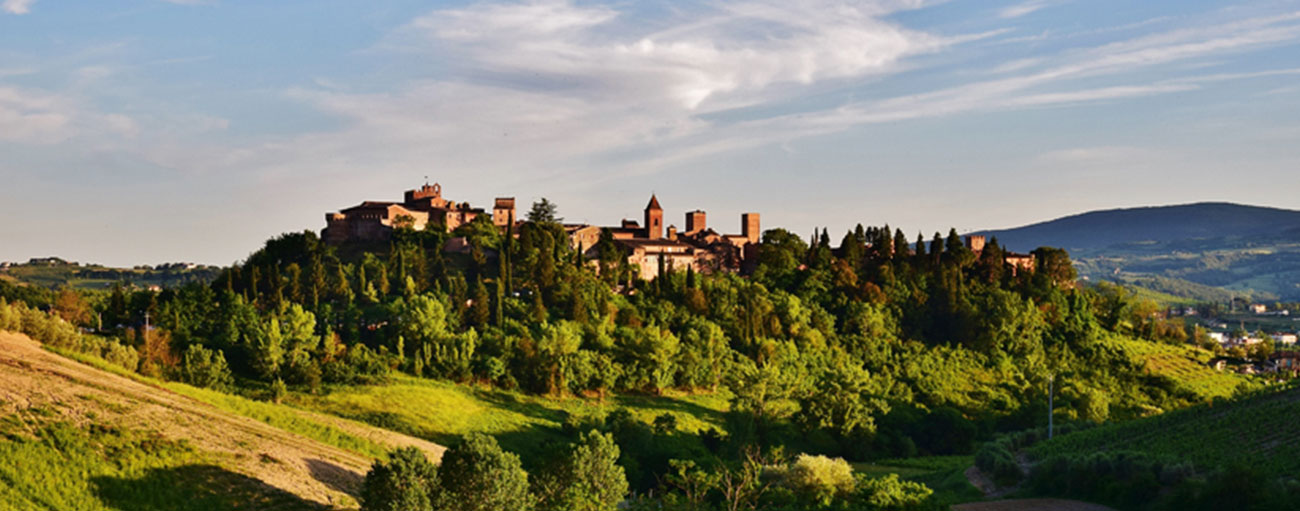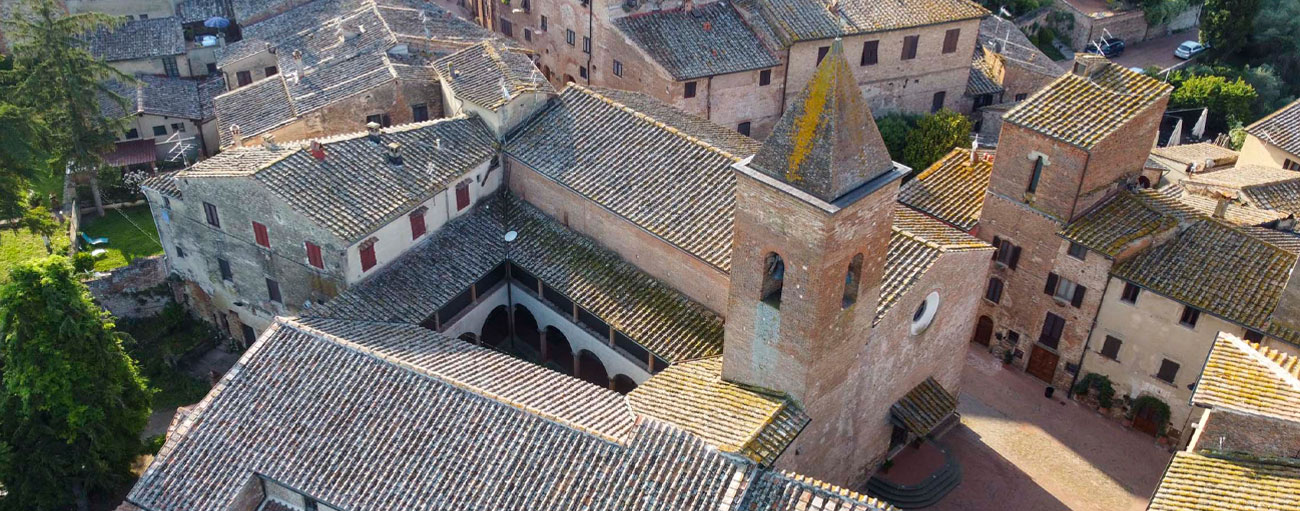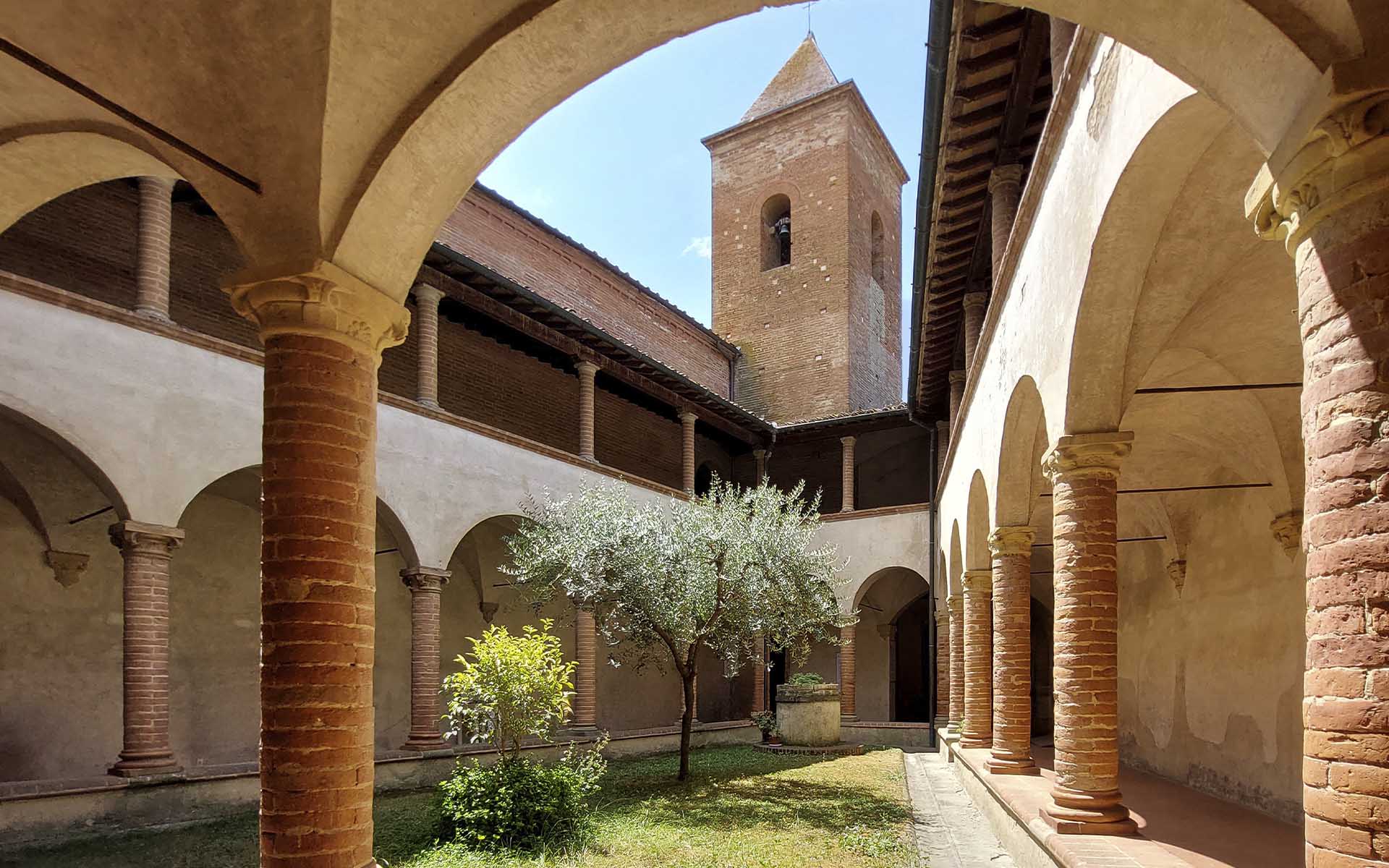The Convent
Historical Notes of Certaldo
Of Etrusco-Roman origin, located at the confluence of the Agliena stream into the Elsa, Certaldo was a fief of the Counts of Alberti. In fact, in the 7th century BC, following close contacts with Volterra and Etruria, a hub of transit and exchange of culture and civilization was created, whose persistence was confirmed and revived in the 7th century AD when the Val d’Elsa reaffirmed its central role among the major communication routes.
In 1184, the Florentines forced Alberto to demolish his towers and never rebuild them.
From 1293, Certaldo was definitively subject to Florence, and from 1415 to 1784, its importance grew as the seat of the Vicar; during the republican and Medici periods, it was undoubtedly the most important center of the Val d’Elsa and the surrounding area.

The Convent of the Augustinians
Includes the church of SS. Jacopo and Filippo, which houses the remains of Blessed Giulia and the cenotaph of Boccaccio, erected around the 12th century. It faces a small square that was once the convent’s cemetery. It is certain that before 1422, the church was the seat of the Augustinians, who contributed to the codification of the cult of Blessed Giulia.
They exercised real control over the surrounding areas, often causing conflicts with the church of San Tommaso and especially with the mother church of San Lazzaro.
The cloister represents a unique feature due to its irregular trapezoidal shape, creating a suggestive perspective effect; it is built on two levels and supported by brick columns with elegant stone capitals. Ascending the stairs, you reach the cell of Blessed Giulia, where, by her own will, she was walled alive until her death.




